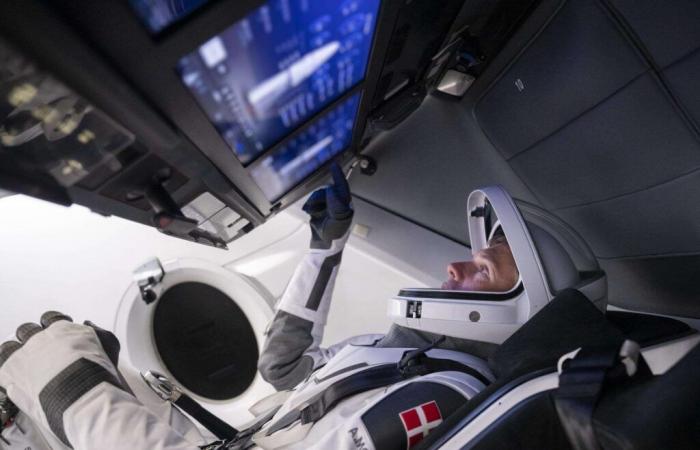When Futura reunites with Danish astronaut Andreas Mogensen on the occasion of the portesportes open to the technical center of theEuropean Space AgencyEuropean Space Agency (Estec) in the Netherlands, we come across a man happy to be on Earth and relaxed, as the post-flight phase of his Huginn mission comes to an end. What’s next for him? Working as an astronaut in this revolutionary world of astronautics.
Futura: You were commander of the ISS during your flight. What are the real differences with the rest of the team in the station?
Andreas Mogensen: There’s not much difference when everything is going well, because we are seven very well-trained, highly motivated and gifted astronauts, working together as a team. We complement each other. At this time, the role of the commander is above all to ensure that everyone is happy, working well, and that the workload corresponds to the availability and capabilities of the team. So that involves looking at the big picture and liaising with the flight director at the control center in Houston, making sure everyone is on the same page and everything is being done according to plan.
Futura: Has the increase in collision or conjunction alerts between the ISS and space debris bothered you?
Andreas Mogensen: We had an interesting experience. One day we were told that NASA had discovered that two satellites were about to collide: one was one of its scientific satellites and the other was an old, inactive Russian or Soviet satellite. The ephemeris indicated that they would pass within six meters of each other, but with too great a margin of error. If they collided, it would have created a cloudcloud of debris which would have crossed the path of theISSISS for two to three days! For hours we waited to find out if the collision would happen or not. Fortunately there was no collision, but we were a little nervous because there was nothing we could have done if they had collided.
The Space Station had to make a maneuver to avoid a satellite
Futura: Anti-collision maneuvers between the ISS and an object are clearly increasing…
Andreas Mogensen: This is the greatest risk for the station, but it is also a risk for the other satellites and we must be more and more alert today. If you launch something into space, you have to plan how to get rid of it. Most countries know that we must act responsibly in space to minimize the problem of space debris, because it does not only concern the ISS.
Andreas Mogensen: On board the station, we all form a united team. We work together with common goals which are to explore space, push boundaries and acquire more knowledge about the Universe and our Planet. So there was no problem in the station. What is quite strange is that after spending six months in orbit, we separate very quickly on Earth, because we must quickly return to our respective space agencies.
Futura: Sophie Adenot and her four colleagues are currently training in Houston, nine reserve astronauts will begin their first training while one of them, the Swede Marcus Wandt, has already flown and another, the Pole Slawosz Uznanski, is about to do it. Why is the presence of European astronauts increasing?
Andreas Mogensen: This reflects the increase in private or commercial flights. Ten years ago, this opportunity did not exist and the ship SoyuzSoyuz was the only way of access. Today, it appears there are more opportunities and several reserve astronauts may have the opportunity to fly. It’s interesting, because when we first talked about creating a reserve corps four years ago, I would have thought they would never fly.
ESA finds another way to send Europeans into space






